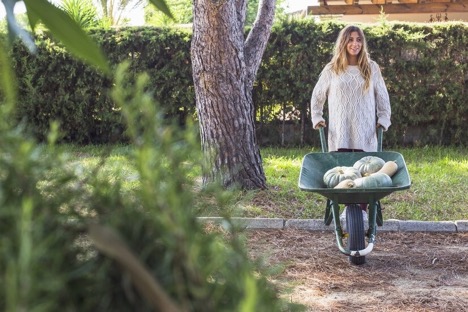 Image by Freepik
Image by Freepik
By Dean Burgess
Start here: your lawn is thirsty, overworked, and wildly out of step with the world it’s living in. That lush, endless green might look good in a magazine, but it’s guzzling water like a 1970s Cadillac. If you’re serious about building a yard that saves water without sacrificing style, you’ll need to rethink everything—what you plant, how you irrigate, even who you call when the hose starts leaking. It’s not just a cosmetic shift. It’s a full reset.
Think Native, Think Thriving
The first move? Ditch the high-maintenance imports and start planting with purpose. Native plants are a smart choice because they’ve evolved to survive exactly where you are. No pampering, no chemical cocktails, no wasting gallons trying to keep them alive through a hot July. These are the kinds of plants that hold their own against drought and still manage to put on a show—goldenrod, milkweed, echinacea, and more. You’ll end up with a yard that buzzes with bees and butterflies instead of resentment.
Water from the Sky, Straight to the Roots
You get rain. Perhaps not often, but when it comes, don’t waste it. Setting up a rainwater harvesting system is surprisingly easy and way more useful than it sounds. You redirect your downspouts, add a barrel or two, and suddenly you’ve got backup irrigation that costs nothing and wastes nothing. It’s not about hoarding—it’s about planning. The water was falling on your roof anyway. Might as well use it.
Smarter Irrigation, Smaller Bills
Forget sprinklers spraying into the wind. If you’re watering the sidewalk more than the soil, something’s off. Installing a drip irrigation system gives you control, precision, and a serious cut in your water bill. Tubes and emitters run close to the roots, keeping moisture exactly where plants want it. It’s not high-tech, but it feels like it. You set it, check it occasionally, and your plants stay hydrated even when you forget they exist.
Mulch Like You Mean It
There’s nothing glamorous about mulch, but if you’re trying to save water, it’s your best-kept secret. A good two- to three-inch layer shields the soil from sun, wind, and evaporation. It also keeps weeds in check, which means less competition for the moisture that does fall. And when it breaks down, you get healthier soil for free. The benefits of proper mulching techniques aren’t subtle. Less watering, less weeding, less regret.
When Things Break, Go Digital
Every water-saving plan hits a snag eventually—leaky spigot, cracked hose, a sprinkler head with no aim. Don’t put off repairs just because you’re not handy. With the right app, home repair becomes one less thing to stress about. You can schedule service appointments, track repair status, and even request quotes from licensed pros. It turns panic into planning. No digging through business cards or waiting three days for a callback. Just tap, book, done.
Fix the Dirt First
You can’t grow a water-wise garden in tired soil. It’s the quiet engine of the whole operation. Start with compost, mix in organic matter, and test for what’s missing. Enhancing soil health naturally improves water retention and plant resilience. Clay, sand, or silt—it all benefits from a bit of love. This is the slow part, the under-the-surface magic that takes months to show results. But once it does, your plants won’t just survive. They’ll thrive on less.
Ground Covers That Work Hard
Grass isn’t the only option, and in a dry climate, it’s usually the worst one. Swap it out for low-water alternatives that hug the soil and ask for almost nothing in return. Creeping thyme, clover, sedum, or even gravel interplanted with succulents can be stunning. Selecting drought-tolerant ground covers means you spend less time mowing, less money watering, and more time enjoying a space that finally makes sense. It’s form and function, rooted in common sense.
This kind of yard doesn’t just conserve water, it rewrites the story of what a yard is supposed to be. No more dead zones of thirsty grass or stressed-out roses clinging to life. Instead, you get a patch of earth that’s alive, dynamic, and sustainable. It might take longer to build, and sure, it won’t look like your neighbor’s—but maybe that’s the point. You’re not copying the old playbook. You’re writing a new one, one that knows beauty and responsibility aren’t mutually exclusive.
Explore innovative solutions and community-driven climate action with the Center for Regenerative Community Solutions, where your engagement can build a sustainable future.

